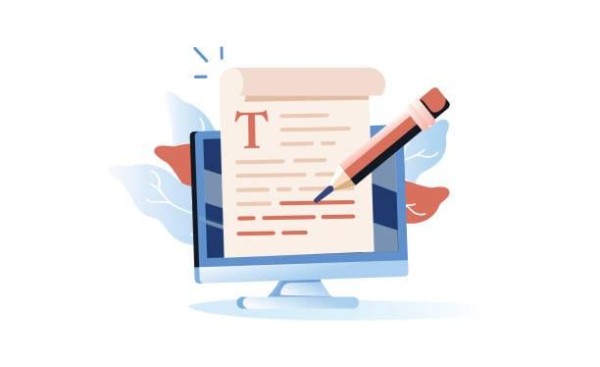When crafting an essay, the use of transitions plays a pivotal role in ensuring your ideas flow effortlessly from one point to the next. Smooth, well-placed transitions not only make your writing more cohesive but also guide your readers through your argument in a logical and easy-to-follow manner.
In this article, we’ll dive into why transitions are essential for effective essay writing, share examples of how to use them properly, and provide valuable tips for mastering their use to elevate the clarity and impact of your work.
Why Are Transitions Important in Essays?
Transitions are the bridges that connect ideas within an essay. Without them, your writing may seem disjointed, confusing, or incomplete. A well-crafted transition guides the reader through the progression of your argument or narrative and improves the overall coherence of your work.
1. Importance of Transitions in Essays
The primary purpose of transitions is to make your writing more readable and to maintain a flow that feels natural. When an essay has effective transitions, each paragraph leads smoothly into the next, creating an organized and cohesive structure. Without transitions, your reader might struggle to understand how one idea relates to the next.
Examples of Good vs. Poor Transitions:
Poor Transition: "Climate change is a growing issue. The world is also facing economic challenges."
Better Transition: "While climate change is a growing issue, the world is simultaneously facing significant economic challenges."
In the better transition example, the sentence introduces the relationship between the two ideas, providing a smoother flow from one point to the next.

2. Types of Transitions in Essays
There are various types of transitions, and each one serves a unique purpose in connecting ideas. Here’s a breakdown:
a. Transitions Between Paragraphs
These help bridge the gap between one paragraph and the next.
Example: "Additionally, another key factor to consider is..."
b. Transitions Within Paragraphs
These help link sentences within a paragraph for better flow.
Example: "First, we need to examine... Next, it's important to explore..."
c. Transitional Phrases for Comparison and Contrast
When comparing or contrasting ideas, specific phrases can be useful.
Common Mistakes to Avoid with Transitions
Transitions play a crucial role in the construction of an essay, serving as vital conduits that connect various ideas within the text. Their primary function is to facilitate a seamless flow between thoughts and arguments, thereby enhancing the reader's ability to comprehend the material. Tools like Punctuation Checker,Click Here, a reliable punctuation checker, ensure that these transitions are correctly punctuated, further improving the clarity and coherence of the essay. In the absence of these transitional elements, the writing often suffers from a lack of structure, which can impede the reader's understanding of how distinct ideas are interrelated.
When essays are devoid of effective transitions or when they are poorly executed, the result can be a disjointed and perplexing narrative. Readers may struggle to follow the logical progression of the argument, which can diminish the impact of the overall message or story you seek to convey. Such disorganization can make it difficult for the audience to engage meaningfully with the content presented.

Conversely, a thoughtfully constructed transition acts as a navigational tool, guiding the reader effortlessly from one point to the next. By strategically incorporating transitions into your writing, you can markedly improve both the coherence and readability of your work. This enhancement ultimately leads to a more persuasive and accessible argument or narrative, enriching the reader's experience and understanding.
a. Overusing Transitional Words
A frequent mistake made by writers is the excessive use of transition words and phrases within their texts. While these connective elements are undoubtedly valuable for enhancing coherence and clarity, an overabundance can lead to a product that appears contrived and mechanical. Here is the Rewriter Pro Tool. Click here for in depth using it. Its helps in rewriting and overusing transitional words. Instead of facilitating a smooth and organic reading experience, the essay may feel stilted and hinder the natural progression of ideas.
It is essential for writers to strive for a harmonious balance in their use of transitional language. They should incorporate these phrases judiciously, ensuring that they are employed solely in instances where they are truly necessary to facilitate the reader’s understanding of the argument being presented. By adopting this approach, writers can foster a more engaging and fluid narrative that effectively guides the audience through the complexities of their discourse.
Example of Overuse:
"Firstly, we need to discuss the budget. Secondly, we should look at the timeline. Thirdly, the resources are also important."
Better Version:
"First, we need to discuss the budget. Next, we should consider the timeline, and finally, the resources."
The second version is more concise and provides a smoother transition between ideas without overdoing the transitional words.
b. Using the Wrong Transitional Word
Each transitional word serves a specific purpose in linking various concepts and ideas within a written work. The improper use of such transitional words may lead to a misunderstanding for the reader and can significantly interfere with the coherent progression of the essay. Therefore, it is essential to carefully select transitions that accurately reflect the relationships among the ideas being presented.
Doing so not only enhances clarity but also facilitates a smoother reading experience, ultimately contributing to a more effective and persuasive argument. Mindful attention to these choices promotes a logical structure, guiding the reader seamlessly from one thought to the next.
Example:
"Nevertheless, the project was successful despite setbacks."
In this example, “nevertheless” is used incorrectly because it implies a contrast, while the sentence is presenting an explanation.
Correct Usage:
"The project was successful, despite experiencing several setbacks."
c. Failing to Transition at All
The absence of well-defined transitions within a written work can result in sudden, jarring shifts between ideas. This phenomenon may leave the reader finding it difficult to grasp the relationships between different points, which in turn creates a sense of disarray and incompleteness in the overall structure of the essay. It is essential to utilize transitions effectively to facilitate a smooth flow of thought.
By doing so, you provide the reader with a coherent pathway that connects one assertion to the next, thereby ensuring a logical progression of your argument. Seamless transitions serve as a guiding tool, allowing the reader to navigate through the complexities of your ideas with clarity and ease, ultimately enhancing the persuasiveness and comprehensibility of your writing.
Example:
"The economy is struggling. Climate change is a critical issue."
This example leaves two significant ideas disconnected. A transitional phrase is needed to show how these two points relate to one another.
Better Version:
"While the economy is struggling, climate change remains a critical issue that must be addressed."
By adding a transition, the connection between the two ideas becomes clearer and the flow of the essay improves.
How to Improve Transitions in Essays: Step-by-Step
Improving the transitions in your essays can take some practice, but following these steps will help you create smoother and more cohesive writing.
Step 1: Plan Your Essay Structure
Before you begin writing, create an outline of your essay’s main points. Consider how each idea relates to the next, and identify where transitions will be needed. Having a structured plan makes it easier to incorporate transitions as you move from one point to another.
Step 2: Use Transitions at Key Points
Transitions are especially important at the beginning and end of each paragraph. As you introduce a new idea, use a transition to connect it to the previous paragraph. At the end of a paragraph, you can use a transition to indicate that you are concluding one point and moving on to another.
Step 3: Revise for Flow
Once your essay is complete, take the time to read it aloud. This will help you identify any areas where transitions are missing or where the flow of your writing feels awkward. Make adjustments by adding or refining transitions to improve the essay’s coherence.
Step 4: Be Concise
While transitions are important, you don’t want to overdo them. Use transitions only where necessary and aim for brevity. Avoid lengthy or overly complex transitions that may disrupt the flow of your writing. Simple, clear transitions are often the most effective.
By following these steps and avoiding common mistakes, you can greatly improve the quality of transitions in your essays, leading to smoother, more logical writing.
Frequently Ask Question
- Why are transitions important in essay writing?
Transitions are crucial because they help guide the reader through your essay, connecting ideas logically and making your writing smoother. Without proper transitions, your essay can feel disjointed or confusing, causing the reader to lose track of your argument or narrative.
- Where should I place transitions in an essay?
Transitions are typically placed at the beginning or end of paragraphs. At the beginning of a paragraph, they introduce the relationship between the previous point and the new one. At the end of a paragraph, they help to summarize or hint at the next idea. Transitions can also be used within paragraphs to connect related sentences.
- Can using too many transitions weaken my essay?
Yes, overusing transitions can make your writing feel forced or mechanical. It’s important to use transitions where they naturally fit, rather than forcing them into every sentence. Aim for balance—use transitions only when they enhance the clarity and flow of your ideas.
- How do I know if I’m using the right transition word?
The best way to choose the right transition word is to understand the relationship between the ideas you’re connecting. For example, if you’re showing contrast, use words like however or on the other hand. If you’re adding information, use furthermore or in addition. Always ensure the transition reflects the connection you’re trying to make.
- How can I improve the flow of my essay using transitions?
To improve flow, first outline your essay to identify how each point connects. Use transitions at key points to bridge gaps between ideas. After drafting your essay, read it aloud to check if it flows naturally. Adjust or add transitions where necessary to smooth out any awkward or abrupt shifts between ideas.
- Can transitions be used in all types of essays?
Yes, transitions are necessary in all types of essays, whether it’s an argumentative, narrative, or descriptive essay. They help maintain logical flow and ensure that your reader can follow your thoughts clearly.

